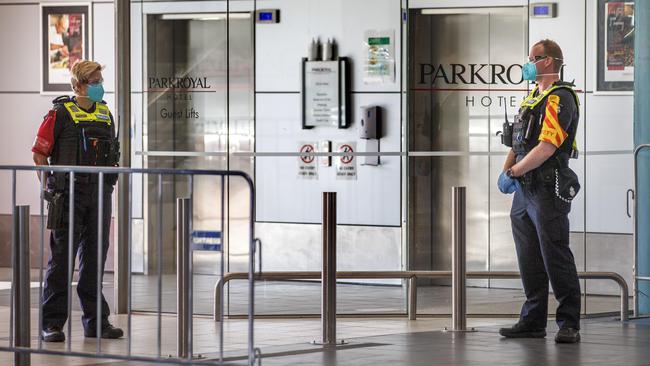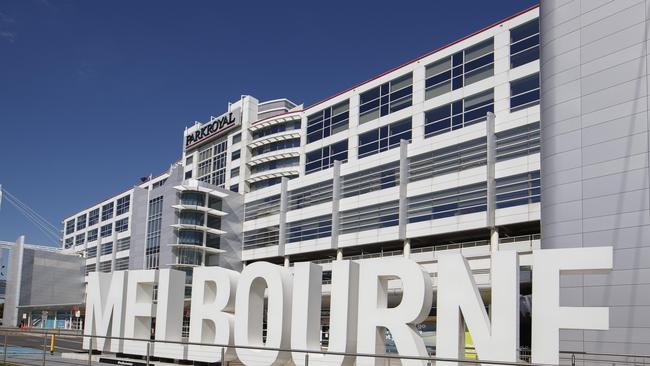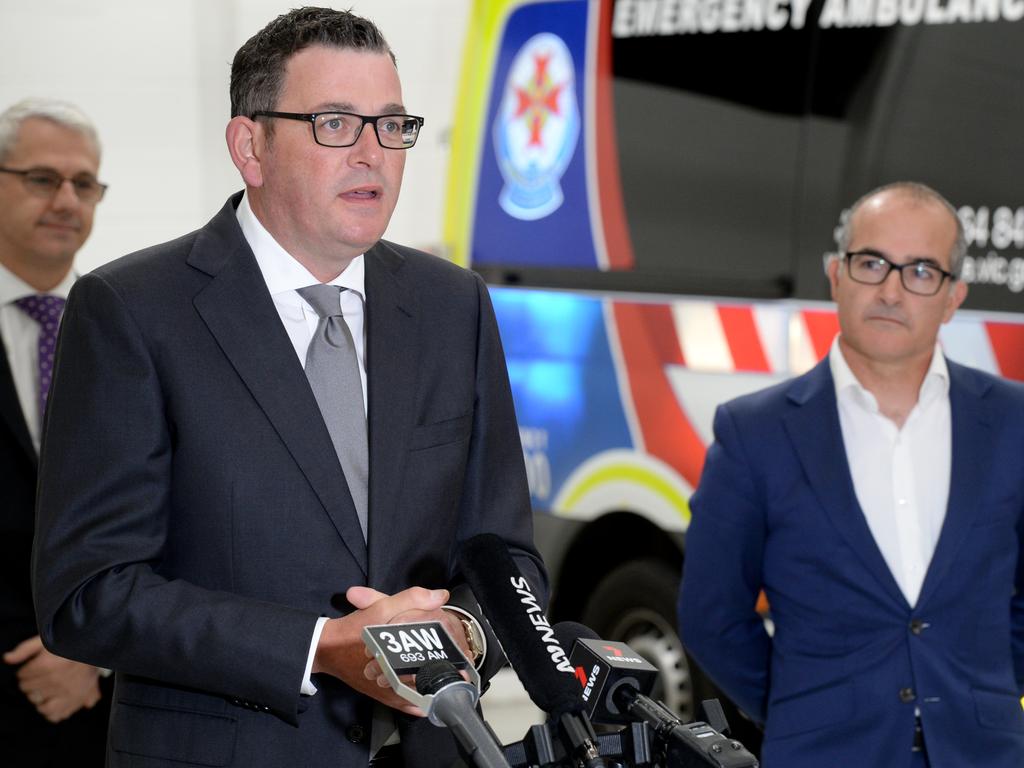Hotel quarantine: airflow to hotels was switched off
Outside air running into a Victorian quarantine hotel hit by a COVID outbreak was switched off every night to ‘save energy’.

Outside air running into a Victorian quarantine hotel hit by a COVID outbreak was switched off every night for 10 to 14 hours to “save energy”, leading to stuffy conditions and a build-up of contaminants, including viral particles, in rooms overnight, a secret Andrews government report reveals.
At the time of the COVID “transmission event” at the Park Royal Hotel at Melbourne Airport in January, the confidential report says the hotel’s rooftop air handling unit (AHU) was programmed to shut down for 10 hours between 7pm and 5am.

When uncovered by government investigators in February, they recommended the shutdowns “cease immediately”, warning that turning off airflow systems overnight “may pose a transmission hazard” when quarantine residents opened their doors to collect breakfast.
Investigators conducting the Park Royal site visit found bag filters attached to the AHU were “visibly dirty” and needed to be replaced, while air flows into the hotel’s corner suites were below recommended minimum government standards.
The government’s “rapid review” of this year’s outbreaks at three quarantine hotels, marked “confidential” and obtained by The Australian, said dirty crockery, bags of rubbish, and “visibly unclean” carpet was found in a corridor during the site visit.
Residential support officers stationed on the hotel floors told them there was often a delay in rubbish being collected, “at times leading to smells in the corridor (food or nappies)”.
The RSOs, who are not allowed to have mobile phones or bottles of water while on residential floors, complained they were experiencing boredom and sleepiness “because not much was happening”. The report said the corridors were warm, “amplifying their sleepiness”.
Cleaners who failed infection prevention and control competency standards were given repeat educational sessions by IPC leads, but the review said it was “unclear whether those providing the education are trained in infection prevention”.
Read the full list of hotel quarantine incidents here
Terminal cleaning of rooms, done when a vacating resident tested positive, often did not occur for more than 24 hours after the resident had left. Carpets were not being steam cleaned despite being an infection risk. The review found quarantine staff in hotel red zones were required to follow a complex personal protective equipment “matrix” in conflict with Health Department guidance.
They found transferring a hotel quarantine resident to a health hotel or hospital could involve up to 17 roles across six agencies, while the crossover of people and processes on hotel floors, lobby and staff areas increased the risk that “movement of air, people and objects may result in cross-contamination or transmission through proximity or contact”.
The Safer Care Victoria report, commissioned by State Health Controller Euan Wallace and Quarantine Victoria commissioner Emma Cassar on February 12, urgently recommended hotel reception staff wear tier-three personal protection equipment when near arriving residents.
While general building standards apply to hotels with regard to airflow features — including heating, ventilation and airconditioning, they were not designed to meet the additional infection and prevention control requirements of a quarantine hotel.
After inspecting the two Park Royal rooms where the COVID transmission occurred, the review team found outside air was ducted to the rooms directly via a riser supplied by the rooftop AHU.
“The outside air tempering AHU was programmed to operate from 06:00 to 16:00,” the report says. “The review team was advised that at the time of the transmission event at this site, this time was set from 05:00 to 19:00. We were also told the outside air intake was turned off to hotel rooms overnight to save energy. This is not consistent with best practise and will lead to stuffy conditions and build-up of contaminants, including viral particles, in rooms overnight. This may pose a transmission hazard when doors are opened in the morning to collect breakfast and/or other items.”
It said outside air supply should be run 24/7.


To join the conversation, please log in. Don't have an account? Register
Join the conversation, you are commenting as Logout